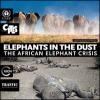Endangered species
Lemurs of Madagascar : a strategy for their conservation 2013-2016

Many lemur species are on the very brink of extinction. Ninety-one per cent of all lemur taxa (species and subspecies) are now classified as Critically Endangered, Endangered, or Vulnerable on the IUCN Red List of Threatened Species. This publication outlines a three-year strategy for the conservation of the lemurs of Madagascar. The strategy contains 30 action plans for 30 different priority sites for lemur conservation.
The current status and distribution of freshwater fishes, land snails and reptiles in the Pacific Islands of Oceania

This report summarizes the conservation status of 167 freshwater fishes, 166 land snails and 157 reptiles native to the Pacific Islands of Oceania (Micronesia, Polynesia and Melanesia). It identifies Pacific Island species that are threatened with extinction at the global level, according to the IUCN Red List Categories and Criteria the worlds most widely accepted methodology for measuring extinction risk.
The conservation status and distribution of reptiles of the Arabian Peninsula

The Arabian Peninsula contains a diversity of desert and mountain habitats. Reptile species richness is high, with 172 species currently recognized. Among these, 89 species (52%) are endemic to the Arabian Peninsula. The conservation status of these species was assessed at a workshop held in Sharjah, UAE, 6-9 February 2012 through the application of the IUCN Red List Categories and Criteria at the global and regional scales. Distribution maps were compiled for the majority of species.
Gorilles de Grauer et chimpanzés de l'Est de la République Démocratique du Congo (Paysage de Kahuzi-Biega, Maiko, Tayna et Itombwe) : plan d'action pour la conservation 2012–2022

Grauer's gorillas and chimpanzees in eastern Democratic Republic of Congo (Kahuzi-Biega, Maiko, Tayna and Itombwe landscape) : conservation action plan 2012–2022

In 2011, the Jane Goodall Institute (JGI) convened conservation partners to develop a conservation action plan for great apes in eastern Democratic Republic of Congo (DRC), with financial support from the Arcus Foundation. The main goal of this initiative was to identify critical threats to gorillas, chimpanzees and their habitats in the landscape, and to develop conservation strategies to address these threats.
Elephants in the dust : the African elephant crisis : a rapid response assessment

The African elephant, the largest remaining land mammal on the planet, is facing the greatest crisis in decades. Reports of mass elephant killings in the media vividly illustrate the situation across many African elephant range states. This publication provides an overview of the current state of the African elephant alongside recommendations for action to ensure its protection.
Catégories et Critères de la Liste rouge de l'UICN : version 3.1, deuxième édition

Les Catégories et Critères de la Liste rouge de l'UICN se veulent un système simple et facile à comprendre pour classer les espèces qui risquent de s'éteindre à l'échelle mondiale. L'objectif général du système consiste à fournir un cadre explicite et objectif de classification de la plus large gamme possible d'espèces, selon leur risque d'extinction.
Categorías y Criterios de la Lista Roja de la UICN : versión 3.1, segunda edición

Se pretende que las Categorías y Criterios de la Lista Roja de la UICN constituyan un sistema de fácil comprensión para clasificar especies de alto riesgo de extinción global. El fin general de este sistema es proporcionar un marco explícito y objetivo para la clasificación del espectro más amplio posible de especies según su riesgo de extinción.
IUCN Red List categories and criteria, version 3.1, second edition

The IUCN Red List Categories and Criteria are intended to be an easily and widely understood system for classifying species at high risk of global extinction. The general aim of the system is to provide an explicit, objective framework for the classification of the broadest range of species according to their extinction risk.
